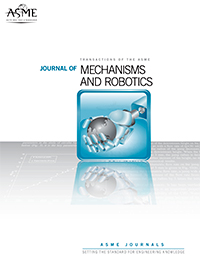Abstract
This article presents the framework for developing a passive (unpowered) mechanical training simulator for replication of biceps spasticity to complement current clinical assessment training. The passive training simulator was developed to mimic three main behavioral features of spasticity, i.e., abnormal muscle tone, catch-release behavior, and range of motion (ROM) reduction. The simulator can replicate varied levels of spasticity (Modified Ashworth Scale (MAS) levels 0–4) using a combination of three adjustable mechanical design features, i.e., resistance level, catch angle, and ROM selectors. Bench-top evaluation examined the performance of individual mechanical design features, as well as their combined performance. Spastic muscle resistance profiles generated by the simulator qualitatively agreed with the clinical descriptions of spasticity in the MAS. Mean peak simulated resistive torque fell within the clinical measures from actual spasticity patients for MAS 1–4, but was lower for MAS 0 (0.9, 3.5, 4.2, 6.9, 9.8 Nm for MAS 0–4, respectively). Seven clinicians were invited to validate the simulator performance. They were asked to identify the simulated MAS level during a blinded assessment and to score the realism of each simulation feature using a five-point scale, where 3 was “about right,” during a disclosed assessment. The mean percent agreement of clinicians’ judgments was 76 ± 12%. The mean realism score throughout MAS 0–4 were 2.82 ± 0.15. Preliminary results suggested good potential for this simulator in helping future healthcare practitioners learn and practice the basics of spasticity assessment.












